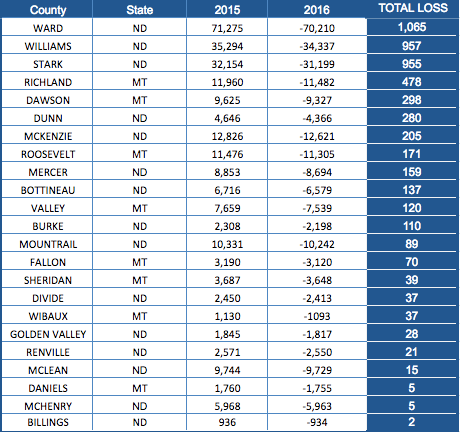There are fewer people living in individual Bakken Shale counties, according to the U.S. Census Bureau.
Related: North Dakota Faces $2 Billion Loss of Revenue
The U.S. Census Bureau released new data last week showing every county in the Bakken Shale region experienced a decrease in population between 2015 and 2016.
The total population decline in these counties was 5283 people.
Dunn County in North Dakota lost the greatest percentage if it's population (6%) between 2015 and 2016. Dunn has consistently had some of the highest rig counts in the region for the past few years.
The biggest loss in total population numbers was Ward County in North Dakota, which dropped by 1065 in one year's time.
The state population has seen a slight increase, with the agency reporting Montana's population increased from 1,032,949 in 2015 to 1,042,520 in 2016. North Dakota had a population of 757,952 in 2016, an increase over 756,927 in 2015.
Population in Bakken Counties
The decrease in population is in stark contrast to the rush that came when the shale boom exploded in 2009, when the number of men in North Dakota jumped 14% (46,000), according to the U.S. Census Bureau. During that time, the state's population grew 12% with men accounting for two-thirds of that growth. The population of women grew 9% (30,000).
In 2015, we reported that Williston, N.D., experienced population growth ten times the normal rate, according to a recent study commissioned by the city. But the latest figures from the Census Bureu is showing a decline from 26,977 in 2015 to 26,426 a year later.
Read more: North Dakota "Man-Rush"
Fallout from low crude prices made its way through the oil and gas industry throughout 2015 and 2016, with Bakken companies removing over 150 rigs from operation during that time. As prices stabilized, rig counts are slowing increasing. For last week, Baker Hughes reported 46 rigs running through our coverage area by Friday midday


